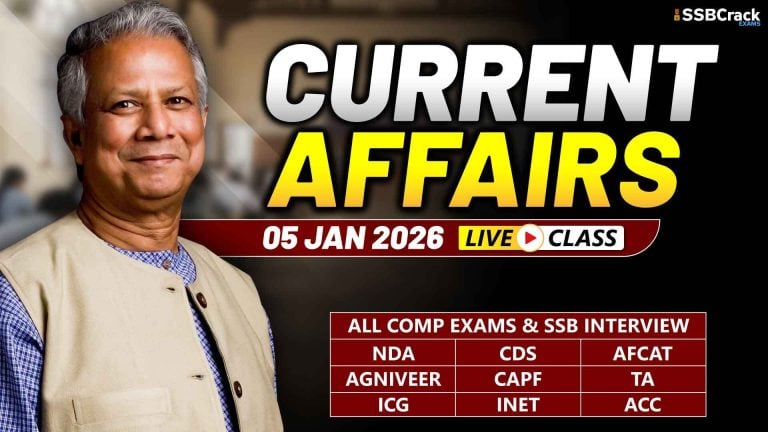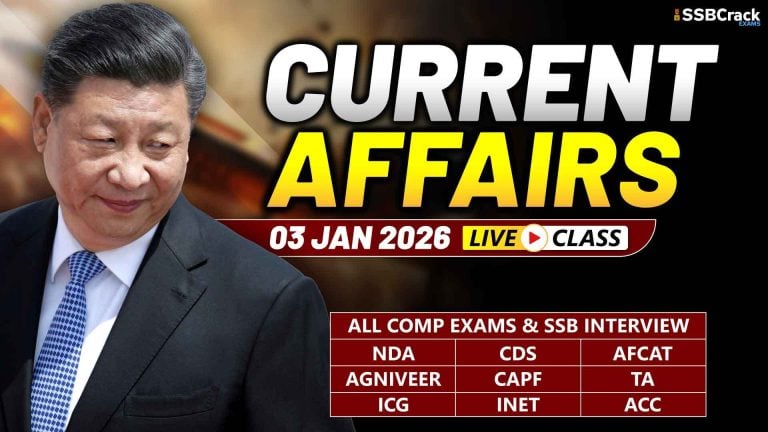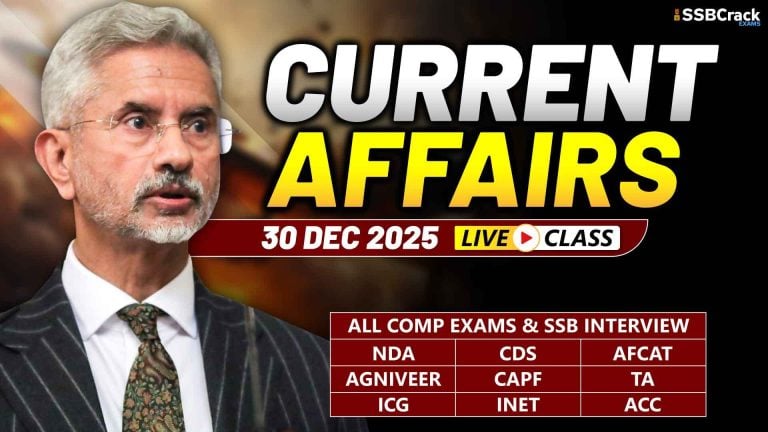Air Marshal VR Chaudhari AVSM VM Assumes Command of Western Air Command IAF
- Air Marshal VR Chaudhari AVSM VM took over as Air Officer Commanding-in-Chief of Western Air Command, Indian Air Force (IAF) on 01 Aug 2020. The Air Marshal took over command from Air Marshal B Suresh PVSM AVSM VM ADC.
- Air Marshal VR Chaudhari was commissioned into Fighter Stream of the IAF on 29 Dec 1982 as a Fighter Pilot. In a distinguished career spanning nearly 38 years, the Air Officer has flown wide variety of fighter and trainer aircraft in the inventory of IAF. He has a flying experience of more than 3800 hrs, including operational flying on MiG-21, MiG-23 MF, MiG 29, and Su-30 MKI fighter aircraft.
- During his illustrious career in the IAF, the Air Officer has held numerous important appointments. He was Commanding Officer of a frontline fighter squadron and has also commanded a frontline Fighter Base. As an Air Vice Marshal, he held the coveted appointments of Assistant Chief of Air Staff Operations (Air Defence), Assistant Chief of Air Staff (Personnel Officers) at Air HQ Vayu Bhawan. As an Air Marshal, he held the appointment of Deputy Chief of the Air Staff at Air HQ Vayu Bhawan. Prior to his present appointment, he was the Senior Air Staff Officer, Eastern Air Command. The Air Marshal is an alumnus of the Defence Services Staff College, Wellington.
- In recognition of his distinguished service, the Air Marshal was awarded Vayu Sena Medal in January 2004 and the Ati Vishisht Seva Medal in January 2015.
5th Round of Core Commander Talks between India and China
- The fifth round of meeting between Corps Commanders of India and China ended at around 9:30 PM yesterday. In the meeting which lasted for more than 10 hours, Indian side discussed disengagement from Pangong Tso lake area by the Chinese troops: Sources
Lt Gen Alok Kler visited areas of South Western Sector
- Army Commander of Sapta Shakti Command visited areas of South Western Sector and reviewed the operational preparedness. He commended all ranks for their professionalism & exhorted them to continue working with same zeal and enthusiasm.
India, Sri Lanka express commitment to enhance bilateral defence ties
- The new Defence Adviser to the High Commission of India Captain (Indian Navy) Vikas Sood has had interactions with the leadership of Sri Lanka’s Ministry of Defence and armed forces in the past week, the Indian High Commission in Colombo said.
- Captain Sood paid courtesy calls on Sri Lanka’s Defence Secretary Maj Gen. (Retd) Kamal Gunaratne on July 28, 2020, Acting Chief of Defence Staff and Commander of the Sri Lanka Army Lt Gen Shavendra Silva on July 27 and Commander of the Sri Lanka Navy Vice Admiral Nishantha Ulugetenne on July 29.
- During these interactions, a range of matters of mutual interest in bilateral defence cooperation was discussed. Strong commitment to further strengthen the defence relationship between the two countries was reiterated by participants on both sides.
- The interactions were marked by traditional cordiality and camaraderie between the armed forces of the two countries.
- Regular high-level exchanges and visits, joint training and exercises, ship visits and sports interactions are the key elements of this robust cooperation.
- Both sides expressed satisfaction over several high-level exchanges and interactions between the two countries in the field of defence this year, despite the travel restrictions in the wake of the Covid-19 pandemic.
- India expressed gratitude for the excellent cooperation by Sri Lanka Navy and Sri Lanka Ports Authority in the repatriation of Indian nationals from Sri Lanka in June 2020 when INS Jalashwa undertook a visit to the island nation.
- “In the context of sharing Sri Lanka’s valuable experience in effectively fighting Covid-19, the recent participation of Maj Gen HJS Gunawardena, Chief of Staff of Sri Lanka Army in a webinar organised by India for various partner countries including Bangladesh, Thailand and Myanmar to share best practices followed by Sri Lanka was appreciated”, the statement said.
China moves PLA battalion across India’s Lipulekh Pass
- China has mobilised a battalion strength of People’s Liberation Army soldiers near Uttarakhand’s Lipulekh Pass, one of the locations along the Line of Actual Control that have witnessed movement of Chinese troops over the last few weeks outside of the Ladakh sector, people familiar with the matter told Hindustan Times.
- India and China have been engaged in a standoff in East Ladakh beginning early May that flared up on June 15, leading to the bloodiest clash between soldiers from ṭwo sides in 45 years.
- Three weeks later, both sides agreed to start the disengagement and de-escalation of troops at the standoff points after a conversation between National Security Adviser Ajit Doval and Foreign Minister Wang Yi.
- There has been thinning of troops at the standoff points, but the disengagement is still work in progress.
- Simultaneously, Indian military officers in Ladakh noticed a huge effort by Chinese troops to bolster its strength in the depth areas and give infrastructure projects on its side a hard push. Chinese troops have augmented its presence on its side of the LAC elsewhere too.
- “There has been accretion of PLA troops across the LAC at Lipulekh Pass, parts of North Sikkim and Arunachal Pradesh,” a top military commander said.
- Lipulekh Pass, which falls on the Mansarovar Yatra route, has been in the headlines for the last few months after Nepal objected to a 80-km road built by India to the Himalayan pass. The Lipulekh Pass is also used for annual barter trade during June-October between tribal populations living on either side of the Indo-China LAC.
- Kathmandu escalated tensions with India this year after it changed its political map to count the Kalapani area including Lipulekh – which lies close to the tri-junction of India-China-Nepal – as its own.
- At Lipulekh Pass, PLA has moved a battalion – approximately a 1,000 soldiers – at some distance from the border.
- “It is a signal that the Chinese troops are prepared,” a second army officer said. He added that India has matched the strength of the PLA troops and is keeping a close watch on Nepal in context of its recent border claims.
- “The situation on the Line of Actual Control remains dynamic with the PLA trying to emphasise its presence beyond Ladakh by building infrastructure on their side of the LAC,” the top military commander quoted above said.
- In Ladakh and elsewhere, the troop movements and the mistrust has led the army to prepare to station soldiers in the icy heights of Ladakh through the winter irrespective of how the disengagement and de-escalation efforts pan out.
- The government has already sounded out its embassies in US, Russia and Europe to locate manufacturers of high-altitude clothing and snow tent manufacturers for emergency purchases. If it still falls short, the plan B is to divert stocks from locations such as Thoise, the base station for soldiers deployed in Siachen Glacier.
- “It looks unlikely that we would be able to take our eyes off the border,” said an army commander. Underscoring that this could be the only way for now to make Indian territory off-limits for an expansionist China and hold peace on the border.
- “After the PLA aggression, we don’t trust the Chinese and fear that they will come back again north of Pangong Tso as summer arrives in 2021,” said a military commander.
- Although the PLA has disengaged from patrolling points 14 (Galwan), 15-16 (Hot Springs), a smattering of adversary troops are still on forward location at patrolling point 17 A (Gogra) and withdrawal from all contested finger features is a distance away at the Pangong Tso.
China brings in more boats, accommodation for additional troops at Pangong Lake
- The Chinese have been enhancing their strength bringing additional boats to the friction areas of the Pangong Lake and setting up new huts to accommodate more troops even as the disengagement set in.
- New trenches and tents have also come up the latest satellite imagery shows.
- In the latest satellite imagery of July 29 analysed by India Today OSINT team 13 boats of the People’s Liberation Army Ground Forces Naval Wing can be seen at Finger 5 and Finger 6.
- At Finger 5 three boats can be seen while 10 are at Finger 6. Each boat can carry at least 10 soldiers. This means around 130 Chinese troops usually belonging to their elite forces are present extremely close to Finger 4 that was always under Indian control.
- A naval base of the PLA ground forces is visible. The images of July 29 establishes an increase in the PLA strength.
- On June 15 there were 8 boats visible at Finger 6 but there has been an addition now.
- The presence of additional boats is alarming and an indication of aggressive posturing many feel.
- “These jetties were not there earlier at Finger 5 or 6. They used to be beyond Finger 8. A permanent presence shows they are expanding their presence to control up to Finger 4,” says Lt Gen DS Hooda, a former Northern Army Commander who has been incharge of operations in Ladakh as well.
- At Finger 5, three floating temporary piers that can be used for anchoring 6 boats is visible.
Accommodation for more troops to survive winter
- There are 40 prefabricated huts and about 15 tents that can be seen at a finger 5 as of July 29. Four additional tents are observed probably belonging to the boat crew.
- The presence of prefabricated huts that can withstand extreme cold suggests the Chinese have already started to prepare for a long haul before the winter sets in.
- Prefabricated huts can accommodate up to 12 soldiers. So at one point in time the deployment includes at least 480 troops in the huts, plus the boat crew and additional troops in the tents.
- “Such huts are usually thermally insulated maintaining an optimum temperature. If they have brought them in it suggests they are definitely readying for the winter,” Lt Gen Hooda adds.
- A gradual increase in the number of tents indicates they are increasing their strength at Pangong Lake and are in mood to move back even though disengagement is being discussed.
- While India has also enhanced deployment and is preparing for the winter deployment this could incur huge costs of the standoff continues. “Maintaining one division in Ladakh peak winter is a challenge. Sustaining enhanced deployment of over 40,000 troops would be a challenge,” said an official.
- Former Director General Military Operations Lt Gen Vinod Bhatia says the latest imagery clearly suggests the Chinese are ready for the long haul preparing for winter. “Despite the disengagement talks they have not gone back fully in Pangong ensuring the status quo ante. India also must prepare for the long haul. Indian troops are battle-hardened, but Chinese are not used to stay at the front lines during harsh winter,” he said.
- After disengagement talks China enhanced strength at Pangong
- Since July 15, a day after the fourth round of Corps Commander level talks while the Chinese moved back from Finger 4 to Finger 5 they continued to strengthen their positions between Finger 5 and Finger 8. India maintains that Line of Actual Control runs through Finger 8. The Chinese had come in 8 km west of Finger 8, which India claims is the LAC to Finger 4.
- While military and diplomatic talks have resulted in partial disengagement at some of the friction points there has been no breakthrough at Pangong Lake where the standoff continues. In fact China has begun to assert that it has not made any attempts to expand its territorial claim here. “China’s customary boundary line is in accordance with the LAC on the north bank of the lake,” Chinese ambassador in New Delhi Sun Weidong said on Thursday.
- Former Deputy Chief of Army Lt Gen Gurmeet Singh says these are intimidating tactics to negotiate in the Finger area. “They have been attempting to change status quo. They are trying to indulge in face saving because they know they will eventually have to pull back. This is the last area to be disengaged so they are delaying things,” he said.
- More military commander level talks are expected to discuss Pangong Lake and Gogra area where disengagement has not happened as discussed.
Pangong and Gogra still volatile
- China might have claimed that disengagement in most friction points is complete, but India maintains not much has changed at Gogra and Pangong Lake for over a fortnight and new status quo has emerged, sources said.
- “In Pangong and Gogra areas disengagement is still not complete. Some thinning of troops has happened but not much has changed,” said an official.
- China has been silent on the status of Pangong Lake while it claims disengagement at Galwan, Hot Springs and Gogra is complete.
- Chinese foreign ministry spokesperson Wang Wenbin said on Tuesday in Beijing that disengagement is complete in the three points.
- Sources say troops from both sides still in close proximity to Gogra and Pangong Lake. The Pangong Lake and Hot Spring-Gogra area that is part of Patrol Point 17A still remains volatile.
- At the Pangong Lake, the biggest flashpoint the Chinese did move back from Finger 4 to Finger 5 on the bank but still remain on the mountain spurs or the ridgeline.
- The Indian troops are between Finger 3 and Finger 2 on the bank of the lake.
- Sources said there are still no signs of the Chinese army dismantling the structures they had set up between Finger 8 and Finger 4.
- The distance between troops from both sides is 4-5 km on the bank of the river but on the mountain ridges of the lake the troops are separated by less than 1 km, sources said.
Indian Army prepares to maintain current strength in eastern Ladakh during winter months
- The Indian Army is preparing to maintain its current strength of troops, tanks and other weaponry in all key areas in eastern Ladakh in the harsh winter months as a resolution to the border row with China in the mountainous region shows no signs of early resolution, people familiar with the developments said on Saturday.
- They said the Indian Air Force(IAF) will also remain on high alert in the forward air bases along the Line of Actual Control (LAC) while the Navy will maintain its aggressive deployment in the Indian Ocean Region(IOR) to keep up pressure on China.
- The Indian Army is making elaborate preparations for the long haul in eastern Ladakh even as it awaits confirmation from the Chinese military for the fifth round of military talks which was earlier expected to take place this week, they said.
- They said the top military and strategic brass reviewed the overall situation along the LAC in eastern Ladakh and elsewhere on Saturday, adding Army chief Gen MM Naravane has been regularly updating Defence Minister Rajnath Singh on matters relating to operational preparedness.
- Government sources said maintaining the current level of troops and weaponry in the high-altitude region will require extensive preparations as the temperature drops beyond minus 20 degrees Celsius in the region in peak winter months.
- “We are preparing to maintain the current strength. That is the plan as of now based on the assessment of the current scenario,” said a source.
- Sources said the government has set the ball rolling in procurement of high-altitude clothing and other required equipment for its soldiers posted in the region.
- They said the armies of the two countries are now expected to hold the next round of Corps commander-level talks next week to thrash out modalities to take forward the disengagement process from the Finger points at Pangong Tso.
- India despatched thousands of additional troops and weaponry including tanks and artillery guns to their rear bases in eastern Ladakh following the Galwan Valley clashes on June 15 in which 20 Indian soldiers were killed. Subsequently, China has also strengthened its military deployment.
- The Chinese side also suffered casualties, but it is yet to give out the details. According to an American intelligence report, the number of casualties on the Chinese side was 35.
- The Chinese military has pulled back from Galwan Valley and certain other friction points, but the withdrawal of troops has not moved forward from the Finger areas in Pangong Tso as demanded by India, sources said.
- India has been insisting that China must withdraw its forces from areas between Finger Four and Eight. The mountain spurs in the area are referred to as Fingers.
- On July 24, both sides held another round of diplomatic talks on the border issue.
- After the talks, the Ministry of External Affairs said both sides agreed that an early and complete disengagement of the troops along the LAC in accordance with bilateral agreement and protocols was essential for overall development of bilateral relations.
- The sources said India conveyed a firm message to the Chinese side that it has to implement the disengagement process as agreed to during the four rounds of Corps commander-level talks between the two armies.
- Three weeks after the Galwan Valley clashes, National Security Advisor Ajit Doval and Chinese Foreign Minister Wang Yi held a nearly two-hour-long telephonic conversation on July 5 to bring down tension in the region. Both sides commenced the disengagement process from July 6 following the Doval-Wang talks who are Special Representatives for the boundary question.
- After the fourth round of Corps commander-level talks, the Army said both sides are committed to “complete disengagement” of troops, adding the process is “intricate” and that it requires “constant verification”.
United Nations will neither use nor officially endorse the new Nepal map
- Even as the KP Sharma Oli-led Nepal government plans to send a new Nepali map, which shows Indian territories as Nepali, to the United Nations, the New York-based intergovernmental body will not be using it in its official dealings. The UN website will also not show territories and areas claimed by Nepal as Nepali territories.
- The reason being the UN prints its own maps and every map comes with a disclaimer. The one on the UN Maps says, “The boundaries and names that are shown and the designations that have been used on this map do not imply the official endorsement or acceptance by the UN”.
- The UN does not use either India’s, Pakistan’s, or China’s maps, or for that matter, any territory that is claimed but goes by its administration largely. The body will, however, as part of diplomatic protocol, accept it, whenever Kathmandu sends it.
- The new Nepali map shows Indian territories of Limpiadhura, Lipulekh, and Kalapani as its own. India had strongly reacted to the development calling it a “unilateral act”, one that is “unjustified cartographic assertion”.
- What is interesting is that previous maps submitted by Nepal never included Limpiadhura, Lipulekh, and Kalapani. In some sense, while Nepal will be sending an updated map, it will be unintentionally conveying formally that it has indulged in cartographic assertion, as New Delhi had said.
- The new Nepal map was announced with an executive decision by the KP Sharma Oli-led government. The constitutional amendment to give legal backing to its coat of arms that shows the new map was passed by the Nepal parliament earlier this year.
- Ministry of External Affairs (MEA) spokesperson Anurag Srivastava had at that time said that the map “is not based on historical facts and evidence.”
- He had further pointed out, “It is contrary to the bilateral understanding to resolve the outstanding boundary issues through diplomatic dialogue. Such artificial enlargement of territorial claims will not be accepted by India.” The ties between the two governments have gone downhill ever since then.
Indian Army Jawan killed in ceasefire violation by Pakistan in J&K’s Rajouri sector
- An Indian Army Jawan was killed when Pakistan opened heavy fire on forward posts along the LoC in Jammu and Kashmir’s Rajouri district on Saturday, a defence spokesperson said.
- He said the Pakistan Army violated the ceasefire agreement by opening fire along the Line of Control (LoC) in Rajouri sector.
- “Indian troops responded strongly to the enemy fire,” the spokesperson said.
- In the incident, Sepoy Rohin Kumar was critically injured and he later succumbed to his injuries, he added.
- Kumar, a resident of Himachal Pradesh, was a brave, highly motivated and a sincere soldier, the spokesperson said.
- He said that the nation will always remain indebted to him for his supreme sacrifice and devotion to duty.
- Pakistan has been firing and shelling forward areas along the LoC one to two times a day in several sectors for almost the past one month.
Japan looks forward to developing new systems to head off missile threats in enemy territory
- As North Korea and China develop new weapons that are harder to intercept through traditional methods, Japan is now looking forward developing new systems to head off missile threats in enemy territory.
- Nikkei Asian Review reported that the draft recommendation approved by a team in the ruling Liberal Democratic Party (LDP) does not specifically mention striking enemy bases – a topic that has been debated since June, when plans to deploy the Aegis Ashore land-based missile shield were suspended – but implicitly encourages Japan to develop such capabilities.
- The proposal stressed the need for “integrated air and missile defense” capabilities to protect Japan as a whole at the same time as the current Aegis-equipped ships are unable to do so.
- Nikkei Asian Review reported that the lawmakers urge continuing the “sword and shield” dynamic of the US-Japan alliance while creating a stronger overall deterrent against threats. They also called to improve Japan’s intelligence, surveillance, and reconnaissance capabilities.
- The proposal will reportedly be submitted this month to Prime Minister Shinzo Abe’s government, thus, accelerating the National Security Council talks on several issues, including alternatives to Aegis Ashore and also whether to acquire enemy base strike capabilities. The officials will set a policy direction by September.
- While adhering to its war-renouncing constitution, Japan seems to be now considering strikes on enemy bases in response to an imminent threat if no other options are available.
REVIEW QUESTIONS
- Air Marshal VR Chaudhari AVSM VM took over as Air Officer Commanding-in-Chief of
- Eastern Air Command
- Southern Air Command
- South Western Air Command
- Western Air Command
ANSWER: D
- Defence Adviser to the High Commission of India
- Captain Vikas Sood
- Captain Sandeep N Marathe
- Captain Manish Kumar Rai
- Col. Avaneesh Chambial
ANSWER: A
- Sri Lanka’s Defence Secretary
- Lieutenant General Shavendra Silva
- Maj Gen. (Retd) Kamal Gunaratne
- General Sir John Kotelawala
- Admiral Ravindra Wijegunaratne
ANSWER: B
- Sri Lanka’s Acting Chief of Defence Staff and Commander of the Sri Lanka Army
- Lt Gen Shavendra Silva
- Admiral Ravindra Wijegunaratne
- Maj Gen. (Retd) Kamal Gunaratne
- General Sir John Kotelawala
ANSWER: A
- Commander of the Sri Lanka Navy
- Vice Admiral Piyal De Silva
- Vice Admiral Nishantha Ulugetenne
- Vice Admiral Sirimevan Ranasinghe
- Vice Admiral Travis Sinniah
ANSWER: B
- Lipulekh Pass connects
- Kullu Valley with the Lahaul and Spiti Valleys
- Indian state of Sikkim with China’s Tibet Autonomous Region
- Byans valley of Uttarakhand with the China’s Tibet Autonomous Region
- Kashmir Valley with the Drass and Suru valleys
ANSWER: C

















